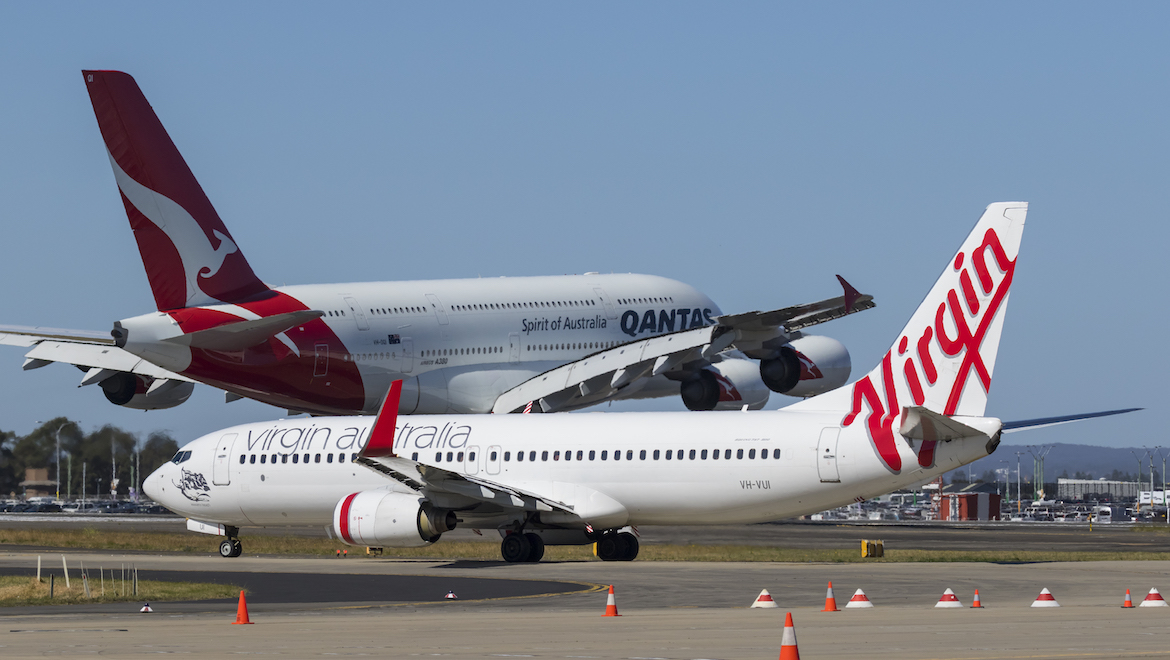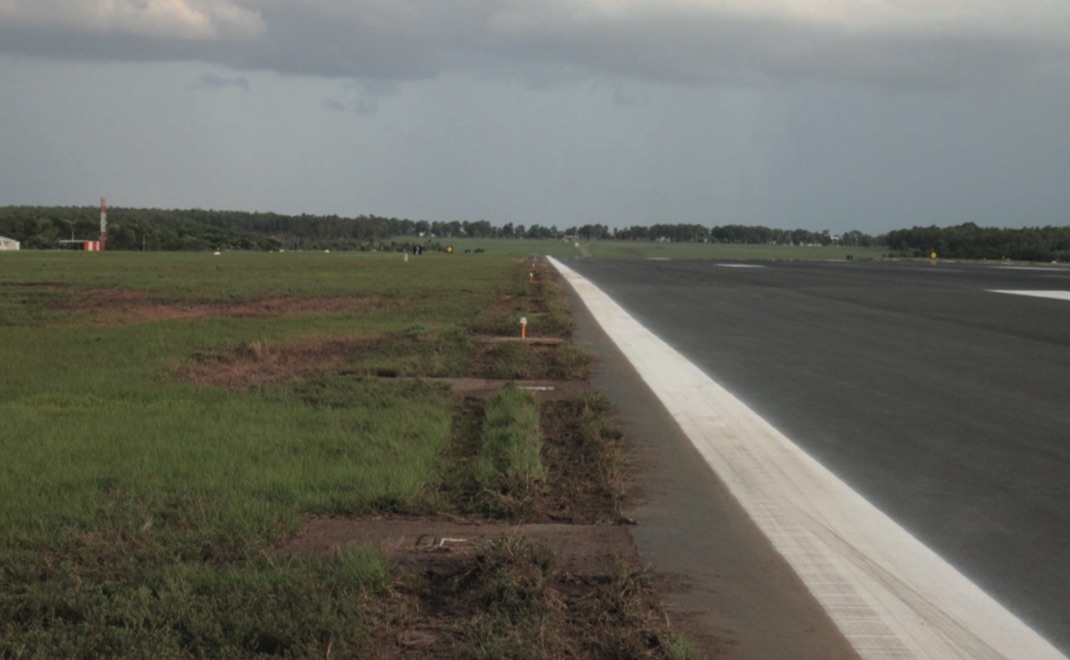
The Australian Transport Safety Bureau (ATSB) is renewing calls for centreline lighting to be installed on wider than usual runways following a 2016 incident where a Virgin Australia flight destroyed six runway lights when it landed 21m off the centre of the runway.
The incident occurred on December 6 2016, when the Virgin Australia Boeing 737-800 VH-VUI flying from Melbourne to Darwin was on approach to Runway 29. There was thunderstorm activity in the area and the flight was due to land at about 2300 local time.
The ATSB final report into the incident published on Wednesday said the flight crew had established and maintained clear visual reference to the runway and surrounds “until they encountered heavy rain shortly before reaching the runway threshold”.
“Under the influence of a light but increasing crosswind, the aircraft drifted right without the flight crew being able to discern the extent of the drift,” the final report said.
“The aircraft landed 21m to the right of the runway centreline and, shortly after touchdown, the right landing gear departed the sealed surface of the runway, destroying six runway lights before the aircraft returned to the runway.
“The aircraft incurred minor damage from ground debris and there were no injuries.”
In addition to the six runway lights being destroyed, the ATSB final report said debris from the lights and ground impacted the aircraft, resulting in minor damage to areas of the right aft fuselage and right horizontal stabiliser, and littered the edge of the runway surface.
There was also a large quantity of grass accumulated in the vicinity of the right wheel well, landing gear and wing flaps.
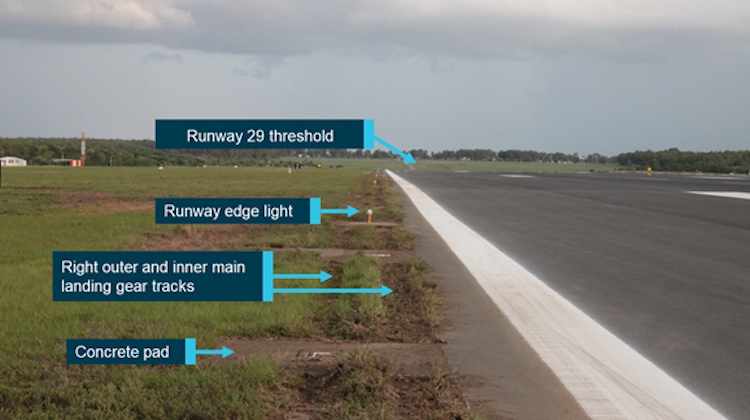
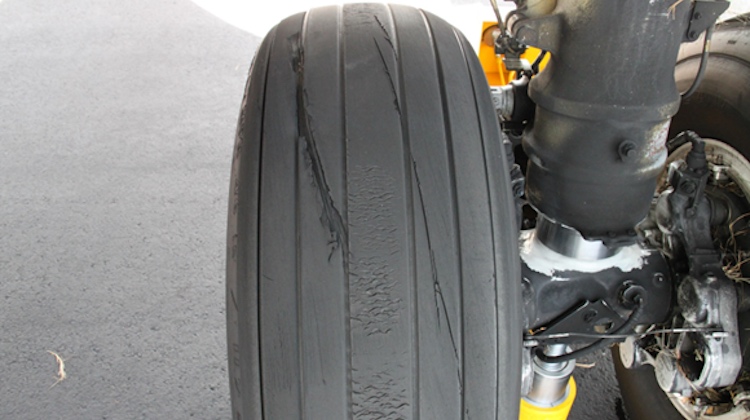
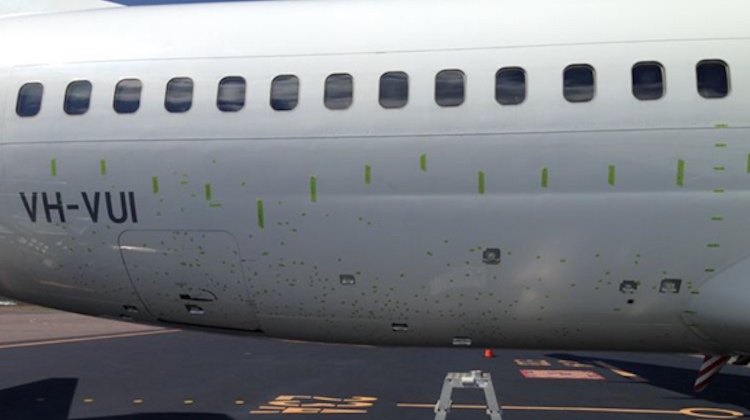
Runway 29 at Darwin Airport measures about 60m wide and 3,350m long. The ATSB report noted the runway was about 15m wider than “almost all the other runways used by air transport aircraft in Australia”. It does not have centreline lighting.
As a result, the ATSB said the two rows of lights alongside Runway 29 were further apart than what a flight crew would normally encounter.
The ATSB said the absence of centreline lighting meant there were “very limited visual cues for maintaining runway alignment during night landings in reduced visibility”.
Darwin Airport is a shared civil and military facility. The Department of Defence owns the runway and other airport infrastructure, while Darwin International Airport runs the civilian operation.
The ATSB noted that while international guidelines recommended the use of centreline lighting on wider runways, there was no mandate from the International Civil Aviation Organisation (ICAO) to do so.
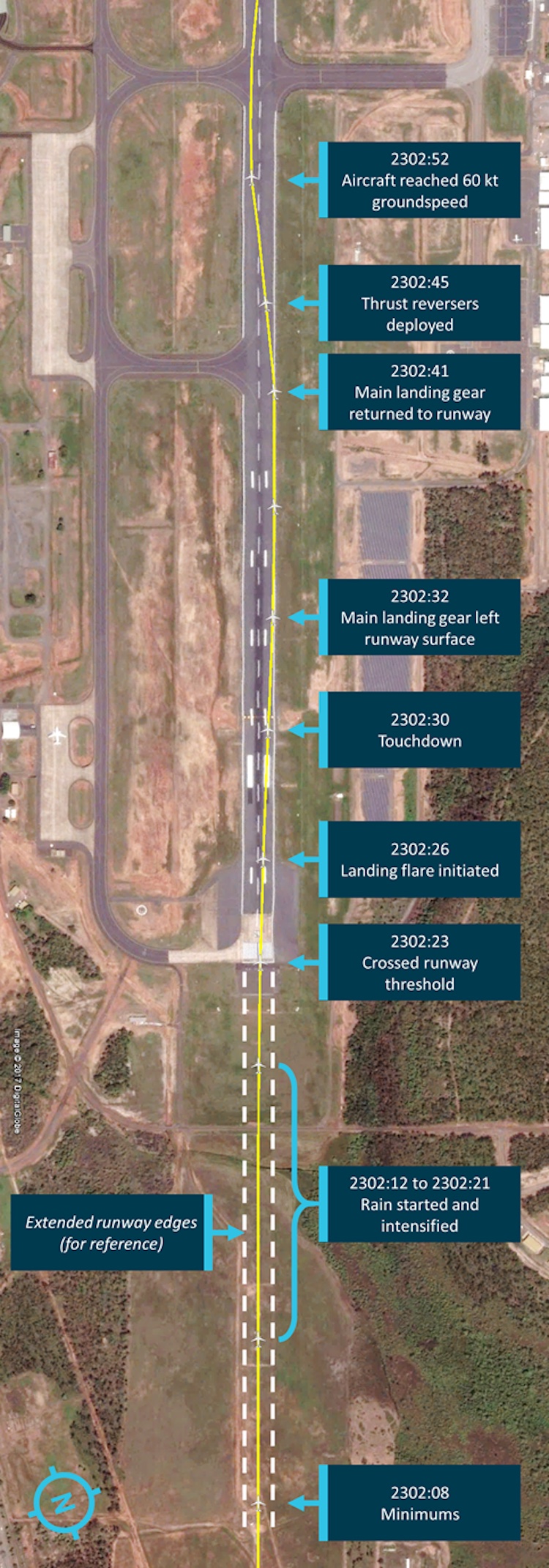
Further, its accident investigation records from 1997 to 2007 showed there had been two other incidents at Darwin Airport where the absence of centreline lighting may have been a factor.
The first was in 2003, when the right landing gear of a Boeing 737 veered off Runway 29 after landing 590m from the threshold, followed by the left landing gear about 760m from the threshold.
Another occurred in 2008, when a Boeing 717 made a “hard landing” at night. The ATSB investigation at the time said the lack of runway centreline lighting had reduced the available visual cues during the latter stages of the approach and landing on Runway 29.
The ATSB had recommended the installation of centreline lighting at Darwin Airport following the 2003 incident.
However, Darwin International Airport responded at the time that “a standard runway centerline system would be prohibitively expensive and is not currently a standard for our runway category”.
The ATSB also raised concerns following the 2008 landing. While the ATSB did not issue recommendation, it did seek a response from the Department of Defence, which said the installation, upgrade and maintenance costs for centreline lighting did not represent value for money.
“A wide runway without centreline lighting, such as at Darwin, poses a particular challenge for aircraft making approaches in darkness and heavy rain,” ATSB executive director for transport safety Nat Nagy said in a statement.
“In these circumstances centreline lighting greatly helps flight crews align the aircraft with the runway.”
The ATSB has issued a safety recommendation to ICAO to review the runway lighting standards in light of the new evidence available.
“The Australian Transport Safety Bureau recommends that the International Civil Aviation Organization review the effectiveness of Annex 14, recommendation 5.3.12.2 (for the installation of runway centreline lighting on Category I runways that are wider than 50 m), given that Category I runways that are wider than 50 m and without centreline lighting are over-represented in veer-off occurrences involving transport category aircraft landing in low visibility conditions,” the ATSB said.
The ATSB said both Darwin Airport and the Department of Defence had advised it that the installation of centreline lighting would be considered during any future runway works.
Meanwhile, the ATSB final report said Virgin Australia had introduced additional guidance to flight crews for approach to Darwin airport, including notes about runway surface, slope, width, lighting, and ambient light.
The carrier had also initiated specific training to pilots for loss of visibility in heavy rain, investigated enhancements to simulator modelling of degraded visibility at low levels, reviewed risk profiles for each airport including Darwin, commenced a program to investigate the potential to install hydrophobic windshield coatings on its 737 fleet, initiated a review of callouts for loss of visibility and reviewed the use of autopilot in poor weather, the ATSB said.
The full report can be read on the ATSB website.
